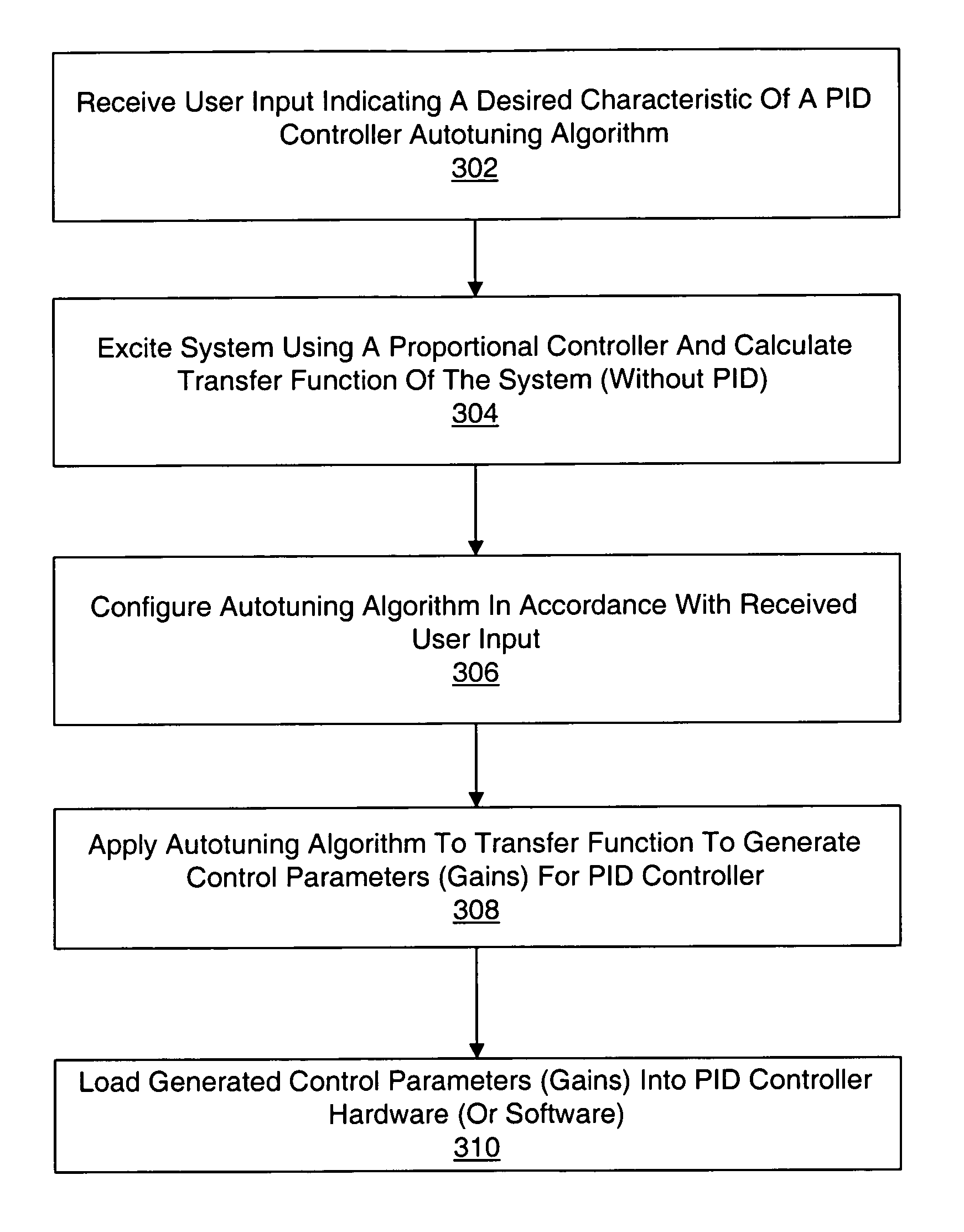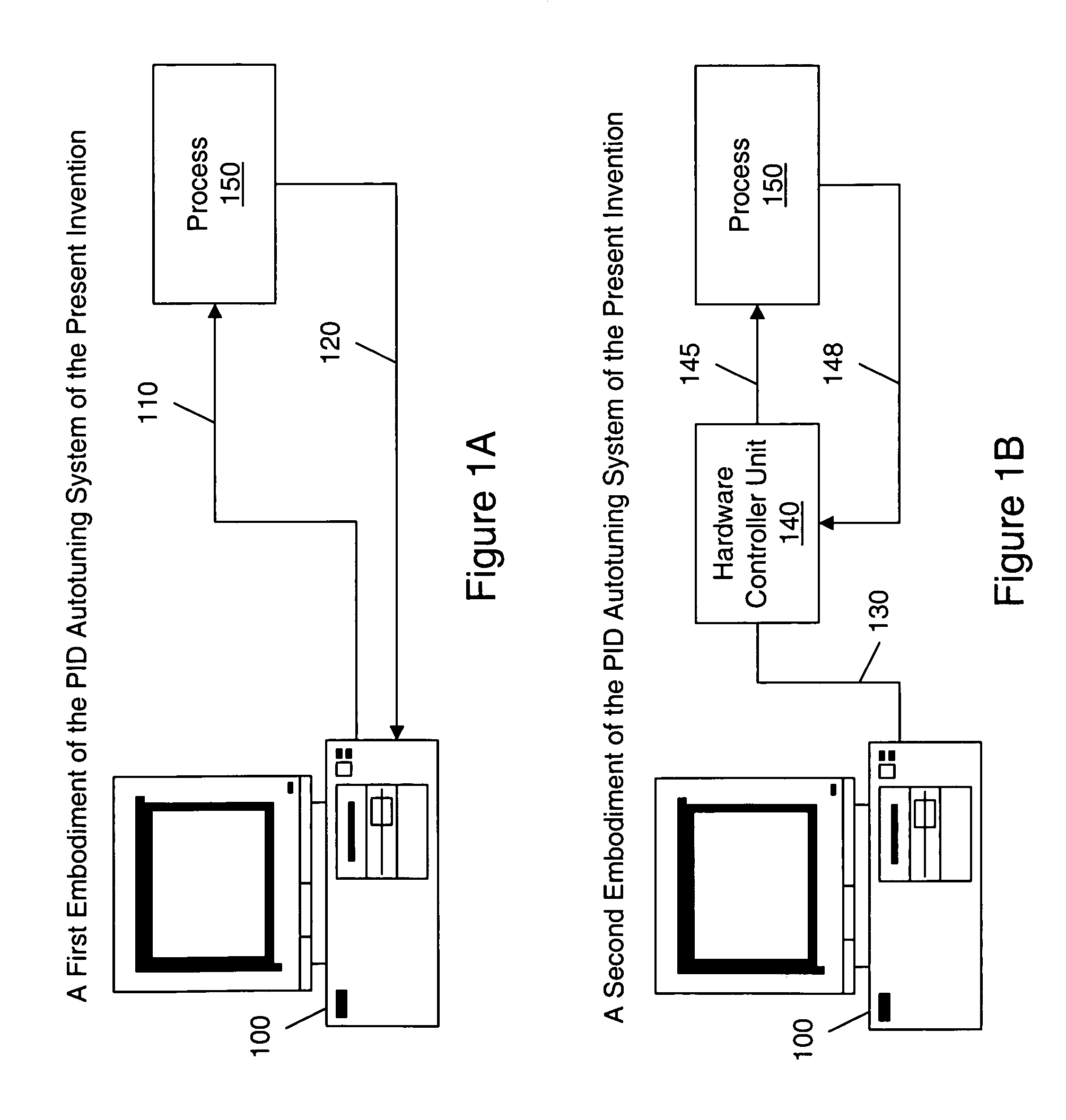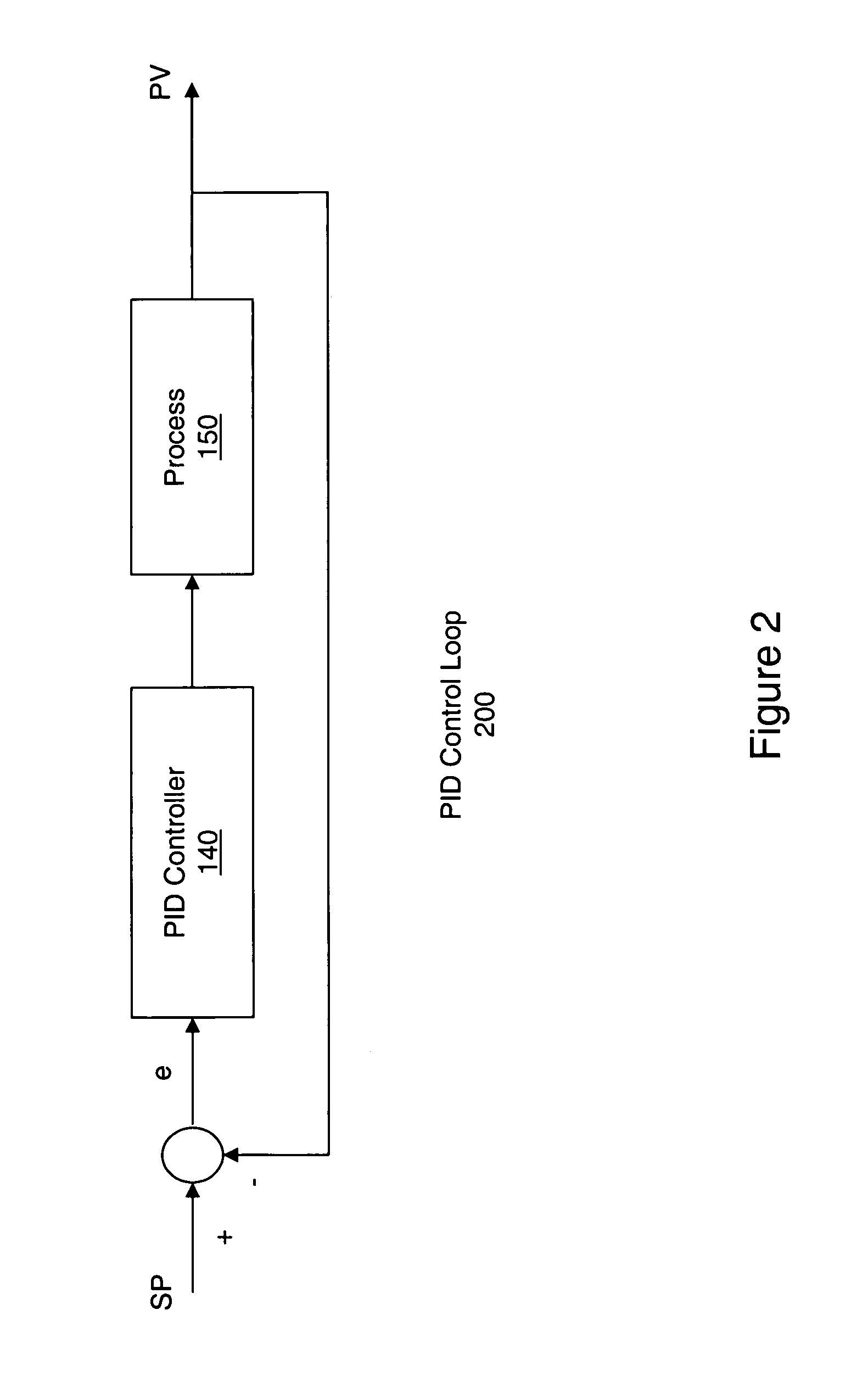System and method for user controllable PID autotuning and associated graphical user interface
a graphical user interface and user-controllable technology, applied in the direction of electric controllers, program control, instruments, etc., can solve the problems of poor control scheme, many controllers are poorly tuned, and some are too sluggish,
- Summary
- Abstract
- Description
- Claims
- Application Information
AI Technical Summary
Benefits of technology
Problems solved by technology
Method used
Image
Examples
example
[0034]An example based upon the above-mentioned Ziegler-Nichols technique applied to a PID controller follows:
[0035]In addition to the normal gain values (P, I, and D) of a PID controller, a derivative sample period parameter (Td) is defined. Td is used as a multiplier of the PIED sample period (PID update rate), in a preferred embodiment of the system. For low inertia systems, such as the small light robotic arm mentioned above, Td should be set to a small value so that the derivative is calculated often enough to provide adequate damping for control servo loop stability.
[0036]Systems with higher inertia, such as the large heavy robotic arm mentioned above, can benefit from larger values of Td. The higher inertia means that the position error cannot change quickly, and so it is acceptable to calculate the derivative less often. This means a lower value of D may be used with the same effective amount of damping, and the system will be smoother with less torque noise from the derivat...
PUM
 Login to View More
Login to View More Abstract
Description
Claims
Application Information
 Login to View More
Login to View More - R&D
- Intellectual Property
- Life Sciences
- Materials
- Tech Scout
- Unparalleled Data Quality
- Higher Quality Content
- 60% Fewer Hallucinations
Browse by: Latest US Patents, China's latest patents, Technical Efficacy Thesaurus, Application Domain, Technology Topic, Popular Technical Reports.
© 2025 PatSnap. All rights reserved.Legal|Privacy policy|Modern Slavery Act Transparency Statement|Sitemap|About US| Contact US: help@patsnap.com



